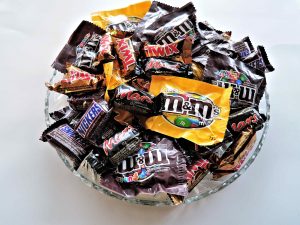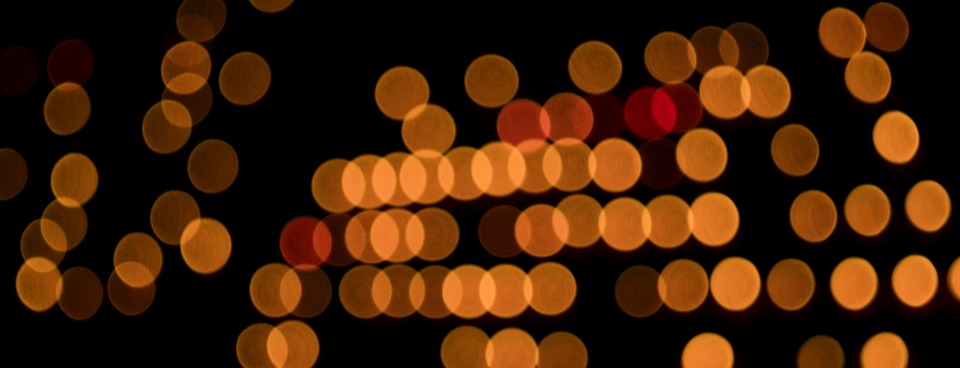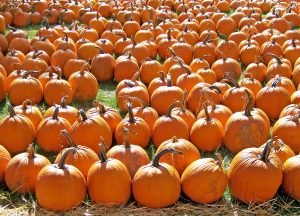There are countless ways to be sustainable during these seasonal holidays and it starts with you! Whether it’s candy, costumes or pumpkins, these are some helpful tips to get you thinking about the ways you can be eco-friendly and festive this Halloween.
Candy
Candy is a staple for Halloween traditions, however there are other ways to be eco-friendly while still having your sweet treats.
You don’t have to ditch candy completely, but try purchasing less candy when shopping or look for eco-friendly brands that have ethical standards regarding the way the candy is made and packaged.
A good way to be a eco-friendly candy consumer is to look for trade free candy in stores such as Trader Joe’s or Whole Foods and finding local candy from vendors in your communities. Here are some eco-friendly candy brands to look out for when debating between the big bags.
 If you make family and friends sweet treats, instead of plastic wrap try using sustainable packaging such as recycled paper. One of my new favorites is Patagonia’s Bees Wraps which are reusable, 100% biodegradable and compostable.
If you make family and friends sweet treats, instead of plastic wrap try using sustainable packaging such as recycled paper. One of my new favorites is Patagonia’s Bees Wraps which are reusable, 100% biodegradable and compostable.
Costumes
In order to save money and be more eco-friendly during the spooky season, costumes can play a big role with conservation.
When it comes to buying costumes for Halloween some tips are to share costumes with friends, trade outfits, save the outfit for the next year, or donate it. Whatever you do, don’t throw it away!
Another great tip is to make your own costume. You can buy products from your local fabric stores, Michaels or seek amazing finds at local thrift shops such as Thrift Queen. You can find additional Chico thrift stores here.
There are thousands of creative, easy and affordable DIY (Do It Yourself) Halloween costume ideas online. Some of my favorites to look at are Pinterest boards for upcoming trends and ideas.
Pumpkins
We can store the candy and costumes away for the next year, but what do we do with the pumpkins?
The backstory on pumpkins during the fall and Halloween seasons are disappointing. According to the USDA National Agricultural Statistics Service, the U.S. produced over 1.6 billion pounds of pumpkins in 2016 and the majority of that amount ends up in landfill.
When they end up in landfill, not only does it contribute to food waste, but they also emit greenhouse gas emissions, which accounts for 20% of total U.S. emissions from landfills. To read more about the facts behind pumpkin waste and ways to conserve read here and here.
So, to change this we need to start using pumpkins in other ways unlike carving it, letting it rot on the doorstep then into the trash. Instead of purchasing a real pumpkin, you can always buy a plastic one and save it for next year! Below are some tips on how to use pumpkins in a sustainable and edible fashion.
Eat It
This winter squash is filled with great nutrition; fiber, vitamin A and beta carotene. The seeds provide potassium and protein. You can find many recipes to make pumpkin puree from scratch or a broth. If you plan on eating it, you can keep pumpkins properly stored at 45 to 50 degrees.
After visiting the pumpkin patch this last weekend, I bought the odd shaped, neglected pumpkin and decided to make a recipe. I roasted the seeds with spices and oven roasted the squash with olive oil, cinnamon, nutmeg and brown sugar at 400F for 30 minutes. It was delicious and I highly recommend trying it out yourself.
Compost It
If you personally compost, compost it! If you don’t compose and have access to visit a compost facility or food waste collection bin, this is another great way to fix the landfill problem.
- City of Chico Compost Facility
- Waste Management – Chico, CA (North Valley)
Share With Wildlife
If you plan on making a trip to Bidwell Park, bring your pumpkin remains with you to feed wildlife. Share the snacks with the animals and donate the rest since it decomposes in forest areas.
Author Bio: Lauren Battisti is a Chico State student studying in public relations and marketing. She is interested and associated in many organizations and movements that support environmental policy change and animal rights groups such as Sustainability and PETA.



1 comment for “How To Be Spooky and Sustainable During The Halloween Season”